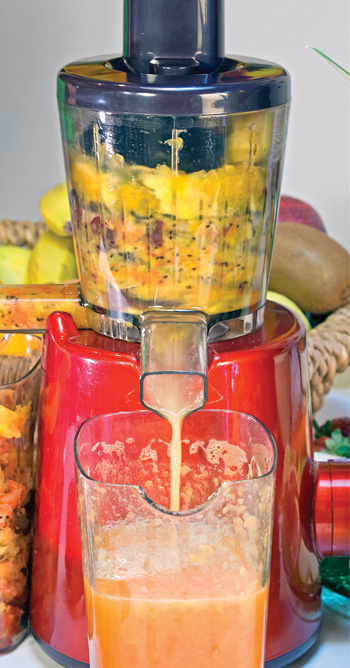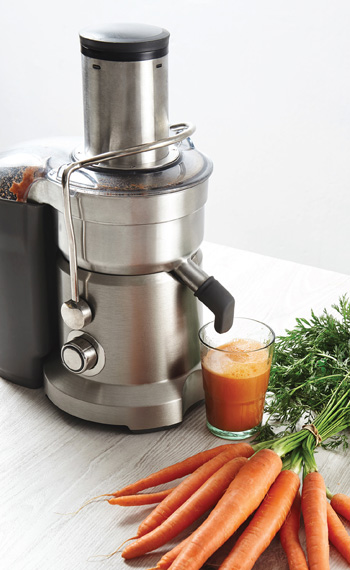 Does it really matter? Well, sort of but perhaps not in the way you might have been led to believe. Especially if you’ve read some of the websites that are masquerading facts on some competitor websites. With a lot of research, we help you take a rational look at the relevance of juicer speed and make sure you don’t insult your customers with the kind of unsupportable facts published on some juice sites.
Does it really matter? Well, sort of but perhaps not in the way you might have been led to believe. Especially if you’ve read some of the websites that are masquerading facts on some competitor websites. With a lot of research, we help you take a rational look at the relevance of juicer speed and make sure you don’t insult your customers with the kind of unsupportable facts published on some juice sites.
When the slow juicer made its grand entrance in the juice industry back in 2015, you might have seen other websites promoting vertical slow juicers implying that the lower the speed of the machine, the better the juice will be. Some tr y to convince you that a rotational speed of say 40RPM gives a more nutritious juice than a speed of 80RPM, while others are still spreading news that high speed centrifugal juicers destroy enzymes and other nutrients with heat and friction. Based on our research, both of these concepts were found to be quite misleading, with little to no scientific evidence to suggest that speed is a big issue.
Some sellers have even supported claims with numbers like ’70 per cent more nutrition’ or ’30 per cent more juice’. These have indeed turned out to be meaningless statements unless they have been qualified by evidence and comparisons that can be independently verified. Some claimed on video streaming channels and websites that they’ve carried out ‘independent’ comparisons when they have not. “Some manufacturers who have jumped on the bandwagon have also made false claims about juicer speeds have already paid the price in out of court settlements, because they were unable to substantiate either their claims against high speed centrifugal juicer manufacturers,”stated UK Juicers.
Slow juicers are slow because of its design limitations of the process by which they juice. Centrifugal juicers are faster because they need to spin the juice out through a filter with centrifugal force, which needs lot of speed. Slow juicers on the other hand are slower because of the need to use a pressing force to get the juice through the filter without creating too much heat and friction. A low speed induction motor is needed for that pressing force. The speed is simply a necessary aspect of the juicing process in each case. The hype about nutritional content is secondary to the mechanical limitations of the juicing process.
 Juice brands are mainly concerned with market share and sales, and because they can sometimes get away with making bizarre claims, suddenly even consumers who are deciding to star t the juicing domestically want to know the exact speed of juicers, believing that the slowest model will be the best. This just doesn’t work in practice. What consumers don’t know is that t he better juice quality has nothing to do with speed – quality is improved because the produce has to pass through tinier gaps between two stainless steel gears during the juicing process achieving better breakdown of the cells. So, the precise RPM is not as important as the juicing method itself, and different methods have different advantages.
Juice brands are mainly concerned with market share and sales, and because they can sometimes get away with making bizarre claims, suddenly even consumers who are deciding to star t the juicing domestically want to know the exact speed of juicers, believing that the slowest model will be the best. This just doesn’t work in practice. What consumers don’t know is that t he better juice quality has nothing to do with speed – quality is improved because the produce has to pass through tinier gaps between two stainless steel gears during the juicing process achieving better breakdown of the cells. So, the precise RPM is not as important as the juicing method itself, and different methods have different advantages.
The most common claim, we believe is false is that heat from the centrifugal juicer can destroy nutrients and the false claim most commonly made against centrifugal juicers is that they heat up juice and destroy nutrients. It turns out that they categorically do not do this. Their speed doesn’t create significant warming and there is good evidence that they produce highly nutritious juice with good enzyme activity.
Centrifugal juicers do have its own set of cons though as the one thing these models don’t do quite as well as masticating juicers (all slow juicers are also masticating juicers). This helps achieve a more efficient breakdown of the plant fibres. In a masticating juicer, the fibres and cells are chewed and ground together, which is believed to help in releasing more of the ‘sticky’ nutrients in the plant cells and membranes. In a centrifugal juicer, the cell walls are broken open quickly and the liquid content is released by the centrifugal force of a fast spinning filter basket. There is very little time or opportunity for the cells to be broken down completely, so the juice is visibly a bit less rich and colourful from a centrifugal. Centrifugals also incorporate air, so the juice will discolour more quickly due to oxidation. That’s not a problem if you are drinking your juice when you make it, but slow juicers do give a longer shelf life.
Juice yield from a centrifugal juicer is comparable with masticating juicers on most hard ingredients, but they do give significantly less juice with leafy greens, wheatgrass and soft juicy fruits. Nevertheless, a centrifugal juicer with a large feed chute and a power ful motor will be ver y easy to live with compared to some masticating juicers, and the speed and convenience can be a good pay off compared to a small loss of juice quality. The more you actually use your juicer – the more you will benefit.
GLOBAL JUICE MARKET: REGIONAL OUTLOOK
Regionally, the global juice market is segmented into Latin America, the Middle East and Africa, Europe, Asia Pacific, and North America. Manufacturers of juice are likely to gain lucrative growth opportunities from the growing consumption of orange juice in developed countries. The leading markets for juice in these regions are the U.S., Japan, and Europe.










